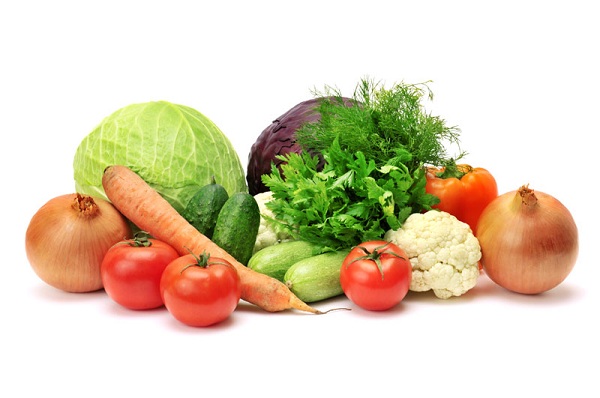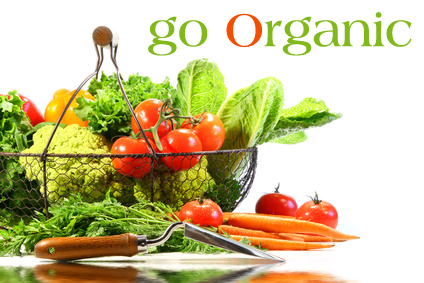
“Eat your vegetables!” is a phrase which most children hear over and over again from health conscious parents. As adults we often find articles, which talk about the benefits of certain vegetables, but most of the times we just glance over and move on…
Did it become such a cliché already, since we’ve been hearing it for so long? Does it really matter how many vegetables one eats every day? Does the kind of these matter? Does it really matter if they are organic, grown locally and in season? Raw or cooked?
You have to admit, if you ever wonder about your eating habits, you asked yourself at least some of these questions. Below are a few important aspects, which may provide some answers.
Eating Vegetables
Definitely YES! They are, most of the time, essential, and more important than fruits and cereals. One could survive without fruits and cereals, but it would be almost impossible without vegetables, for most of the world’s populations. Their sufficient daily consumption could help prevent major diseases, such as cardiovascular diseases and certain cancers. Vegetables are high in minerals, vitamins, fiber and phytochemicals. They contain significant amounts of beta carotene, vitamin B5, vitamin B6, biotin, vitamin C, folate, vitamin K, lutein, magnesium and potassium.
Many people with various health problems, whom I see in my practice, are misled by profit generating health dogma, and believe that loading up on fruits, cereals and some high starch vegetables like corn and potatoes and their processed varieties could cover it all, since they are too, from the “plant kingdom”. But these are exactly the ones which, most of the times, people need to avoid or minimize in order to regain their health
There is also another category of people who load up on huge quantities of juices, fruits and vegetables and experience digestive upset, among other symptoms. That is because a large number of people have very poor digestion these days. Although theoretically nutritious and high in enzyme content, raw juices and veggies can further irritate the gastrointestinal system and generate more damage than good, if intestinal healing is not done properly. In this case, one should rely more on cooked vegetables, until the digestive system is healed.
Ideally, raw vegetables and other raw foods should comprise at least a third of your daily intake of “raw”. When we think about raw foods and vegetables we also think about enzymes! Enzymes are the “work force” of the body. Without them, chemical reactions cannot take place, and hormones, minerals, and vitamins cannot carry out their functions. Most of the whole, raw foods contain some enzymes, but the highest quantities in plant foods are contained in fresh olives, sprouts, avocados, and some tropical fruits.
Fermented vegetables like sauerkraut, pickled carrots, cauliflower, beets, cucumbers, etc. also contain a good source of enzymes, as well as beneficial bacteria.
Although the type (and quantity) of vegetables we consume is highly individual, the following are among the most nutritious ones and should be consumed organic and fresh regularly: asparagus, avocado, cabbage, escarole, fennel, beet greens, collards, spinach, kale, broccoli, mustard greens, onions, peppers, tomatoes, dandelion greens, green beans, mushrooms, lettuce, Brussels sprouts, endive, Swiss chard, olives, endive.
You can also get good nutrition from high starch vegetables, but these should be consumed in moderation, due to disruptions in blood glucose levels, which they might generate: fresh corn, beets, carrots, potatoes, jicama, squashes, parsnip, peas, legumes.
Choosing the Right Quantity
I’m not going to tell you that you need “7-10 servings of vegetables and fruits” per day to stay healthy. That is simply not true. There is far too much genetic diversity in the human species to logically argue for any type of one-size-fits all nutrition plan, which will make every person that follows it healthy. Since we are all unique on the biochemical level as we are on our fingerprints, we all need to meet individual, genetic based nutritional requirements, which fit our metabolism. So types and ratios of vegetables (carbohydrates) in relation to protein and fat vary greatly from this perspective, depending on each person’s metabolic individuality.

For metabolisms who need a large amount of carbohydrates in their diet, juicing organic vegetables is highly recommended, if tolerated. Juicing helps you absorb most of the nutrients from the vegetables, and it allows you to consume an optimal amount of vegetables in an efficient manner. You can also add a wider variety of vegetables in your diet this way. Even other metabolisms, who instead need higher proteins and fat in their diet, can benefit from juicing, if they choose to use some vegetables coupled with cream, coconut milk, or even bone broth.
Organic, Locally, In Season. Do They Make A Difference On General Health?
The ideal is to consume fresh, minimally processed high-quality vegetables, locally-grown and organic, with a majority of them being raw. Why? Because it’s proven to be nutritionally better, it doesn’t contain harmful substances, which can harm your health, is tastier and vital for your and your environment’s health.
Moving further on from our own plate and health to the public health, there are some very important aspects to consider, which regard us all:
Choosing Organic
USDA Organic farmers (and many small, local farms working without certification) must use different standards when growing vegetables. These standards include never using: pesticides, synthetic fertilizers, sewage sludge, genetically modified organisms (GMO) and ionizing radiation. The Environmental Protection Agency (EPA) considers 60 percent of herbicides, 90 percent of fungicides, and 30 percent of insecticides to be carcinogenic, and most are damaging to your nervous system as well. In fact, these powerful and dangerous chemicals have been linked to numerous health problems such as: neurotoxicity, disruption of the endocrine system, carcinogenicity, immune system suppression, male infertility and reproductive function, miscarriages, Parkinson’s disease.

But if you need to work within a certain budget, then you can choose the best choices when it comes to lowering your overall pesticide exposure.
Of the 43 different fruit and vegetable categories tested by the Environmental Working Group and included in their Shoppers’ Guide to Pesticides in Produce, the following 12 fruits and vegetables had the highest pesticide load, making them the most important to buy or grow organically: peaches, apples, sweet bell peppers, celery, nectarines, strawberries. Cherries, lettuce, grapes, potatoes, spinach and pears.
In contrast, the following foods were found to have the lowest residual pesticide load, making them the safest bet among conventionally grown vegetables: broccoli, cabbage, banana, kiwi, asparagus, sweet peas, mango, pineapple, sweet corn, avocado, onion.
Buy Local
Local food is fresher and tastes better than food that has been trucked or flown in from thousands of miles away. In-season, locally and organically grown tomatoes which burst with flavor are totally different than the pesticides laden and artificially gas ripened tomatoes. Fresh corn in season tastes best when you haven’t eaten any in 8 or 10 months. That way you can also make sure you won’t overdo it! Eating locally means eating seasonally, with all the deprivation and resulting pleasure that accompanies it.

Shipping food from thousands of miles leads to a big carbon footprint for a small basket of veggies. Look for farmers who follow organic and sustainable growing practices and energy use to minimize your food’s environmental impact. By buying foods grown and raised closer to where you live, you help maintain farmland and green space in your area. It also works to build your local economy instead of being handed over to a corporation in another city, state, or country. Since the food moves through fewer hands, more of the money you spend tends to get to the people growing it.
The fewer steps there are between your food’s source and your table the less chance there is of contamination. Also, when you know where your food comes from and who grows it, you know a lot more about that food. Knowing your food and your grower brings many benefits on a social, psychological and health level. You can build a trustworthy relationship with your grower, who will tend to help you, whether he makes sure you get the freshest tomatoes, tells you when your favorite food is on sale and offers you the best varieties for the day. You can ask straight questions about the way he grows the vegetables and you will get detailed information.
As you see, all these aspects are important to consider, since a vegetable is simply not just a vegetable! By making the right choice you can improve your health and the public’s health, you can help your community, the environment and more.
Resources:







